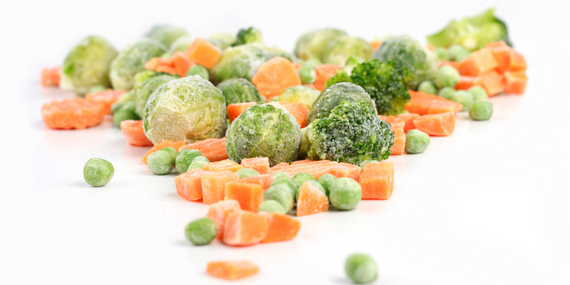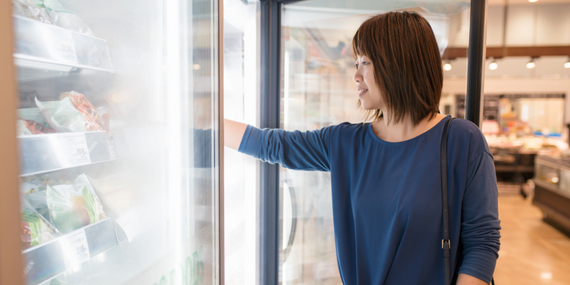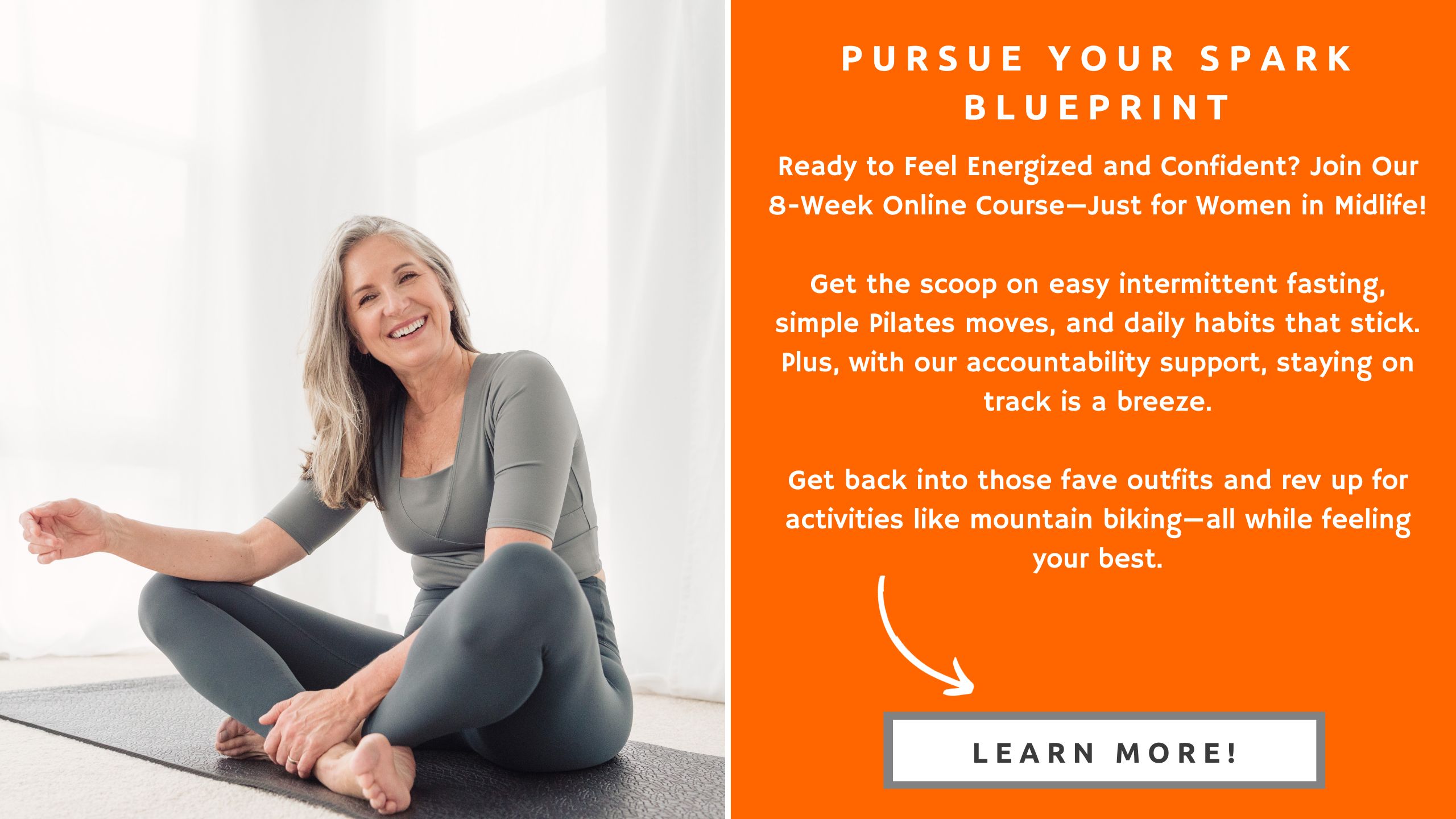I’m sure you’ve scrolled through your phone or laptop to find the perfect diet approach, especially now that summer is here and we feel pressured to have that bikini body. You have been searching for that perfect program that just might help you:
- lose a few pounds,
- make it easier to eat consistently healthy,
- not overcomplicate meal planning,
- make meals less time-consuming now that the kids are gone.
In your search, you might have come across “clean eating.”

Recently I was asked in a podcast interview what I thought of “clean eating,” and let me tell you that I have very strong feelings about this diet approach. Then, I’ll share what clean eating is, what it’s not, and why I recommend not overcomplicating your meal planning and eating strategies with the “clean eating” approach.
What does clean eating mean?
The phrase “clean eating” started with good intentions: It implied eating whole foods, natural foods such as vegetables, fruit, whole grains, nuts, oils, seeds, and animal and plant-based protein.
It also meant eating less processed and packaged foods. So, naturally, it encouraged cooking at home and finding healthy ingredients.

What are the clean eating principles?
- Eat six small meals a day.
- Start every day by eating breakfast within an hour of getting up.
- Eat lean protein and complex carbohydrates at every meal.
- Have two or three servings of healthy fats every day.
- Get fiber, vitamins, nutrients, and enzymes from fresh fruits and vegetables.
The original concept poses the question: Where does our food come from? Encouraging reading labels and understanding what’s in your food is a practice I wholeheartedly support.
There are a lot of variations to clean eating, but it refers to eating foods as close as possible to their natural state. This encourages us to make our meals from scratch to make them as “clean” as possible.
But in the end, clean eating is a fad diet based on the belief that consuming whole foods and avoiding convenience food and other processed foods offers certain health benefits. I don’t want to criticize anyone’s way of eating and only want to provide my evidence-based option.

Eating clean has now taken on a new misguided meaning supporting our diet culture with the idea that being thin is desirable, disregarding our health. This idea suggests that if you’re not eating clean, what you otherwise eat is dirty and unhealthy, which is simply not true.
Clean eating encourages the concept of foods grown more environmentally conscious but disregards – the time required to find the perfect farm-fresh foods and the budget to buy such foods. That excludes anyone that doesn’t have the time or the money to eat healthily, shaming those people for being unhealthy and less clean.
So many women already feel bad about themselves and their eating habits, and if eating clean contributes to that feeling, we don’t need that!
If you struggle with feeling guilty about what you eat, check out my blog: How To Stop Emotional Eating To Control Your Life.

Is clean eating always good for you?
Eating clean doesn’t necessarily mean that person is taking the best approach for their health. Eating clean can turn into an obsession. Spending hours finding the cleanest food or the best ingredients can mentally and physically drain you. It can feel like you are punishing yourself because you can’t find the cleanest food.
Some medical experts call this fixation orthorexia nervosa, which translates to “fixation on righteous eating.” According to an article in the Social Science & Medicine journal, many clean eating diets fall “under the banner of orthorexia.”
While people with orthorexia nervosa may eat healthy foods, their obsession with foods is unhealthy.

Did you know that some foods are considered dirty?
Based on the clean eating principle, additives in foods like Vitamin D in your orange juice are not allowed. Ironically, vitamin D strengthens your bones and increases your iron levels. So while this may not be considered pure, it can help someone reach their nutritional needs. Furthermore, it directly shows how the clean eating diet can be ridiculous and counterproductive when it restricts you from options that contribute to your dietary requirements.
Is clean eating healthy?
Eating clean means a person is trying to make better choices about the foods they eat. Many healthy diets don’t limit the prepared or packaged foods as clean eating does. A healthy diet doesn’t have to be restrictive or eliminate foods but allows the person to choose what works best for their health.
In my blog post, I talk more about ways to help you make healthy choices that work for you: 5 Simple Strategies To Declutter Your Nutrition Habits.

3 Tips To Start Eating Whole Foods Instead Of Eating Clean
1. Eat plant-based more often
Loading up on vegetables doesn’t mean ONLY eating vegetables. By starting with vegetables, the rest of your plate will fall into place when you add lean proteins and whole grains. This doesn’t mean you’ll always eat the same salad. Instead, consider adding a variety of fun, healthy whole foods. For example, tweak your sandwich by adding a side of cucumbers and tomato slices and/or building on your smoothie by putting in spinach, avocado, or berries. This simple strategy is helpful when eating more vegetables or fruits.

2. Eat food, not food claims
Don’t be distracted by the labels on specific foods claiming it is “healthy.” Instead, read the labels of the foods you buy. This will give you a better idea of what is in the food you plan to eat. Some claims are legit, but others are not as much; for example, we know that water has zero calories. Nutrient content claims describe the level of a nutrient in the product, using terms such as free, high, and low, or they compare the level of a nutrient in a food to that of another food, using terms such as more, reduced, and lite. Again, reading the labels is the best way to be aware of what you are eating.

3. Not all packed/processed food is evil
I have said things like, “Look for the shortest list of ingredients and avoid those where you can’t pronounce the ingredients,” but there are some important exceptions. So before you buy, ask yourself, are the ingredients supposed to be in the product?
Of course, how we process food matters. Some ingredients can change — like being frozen, fermented, or sprouted — that makes them equally or more nutritious than they once were. Likewise, there are minimally processed and ultra-processed foods. For more on how foods are processed, Here’s how to tell the difference.

Creating healthy balanced meals helps you boost your vitality. However, worrying about finding the cleanest food can take the pleasure of eating and meal planning. Instead, it can create stress and uncertainty. Please don’t stress what you are and what you aren’t allowed to eat. This leads to you feeling bad if you don’t eat clean. So ditch eating clean and opt for whole foods.

Instead, focus on creating balanced meals with lean proteins, the least amount of processed carbohydrates, and healthy fats for every meal. Eating whole foods instead of eating clean is a great place to start. Check out the Empty Nest Reboot program if you want help with your meal strategies! That’s where I’ll teach you how to incorporate healthy lifestyle strategies that are sustainable.

Heike,
I have heard of clean eating but I didn’t know that you had to eat 6 small meals a day.
I try to eat fresh food and cook from scratch but it’s not always so healthy.
Great tips!
XXOOXX
Hi Robin, these are great steps, and nobody wants you to be perfect. Bon Appetit!
Great information Heike! Thanks for the links on how to learn how foods are processed. I have a general knowledge, but have always wanted to look Into that deeper.
Xo-Melanie
Melanie, that means a lot to me; thanks. Glad you found the processing link helpful, and it’s so informative when choosing processed foods.
I haven’t had a chance to learn about clean eating. Thank you for the explanation as I think I’m going to give this a try.
Nancy, let me know how your experiment turns out.
These are really good, simple tips. Not overwhelming at all!
Hi, MelAnn glad you found those tips helpful!
Comments are closed.